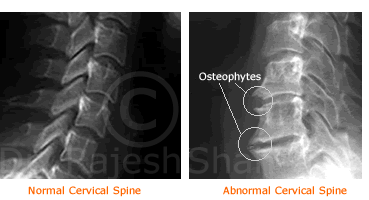What is Cervical Spondylitis?
Cervical spondylitis is a common degenerative condition of the cervical (neck) spine that most likely is caused by age-related changes (wear and tear) in the intervertebral disc and vertebrae of the neck. Research has shown that CSM (cervical spondylotic myelopathy) is the most common cause of non-traumatic weakness in limbs and persistent stiffness and nagging pain in the neck.

'Spondylo' is a Greek word-meaning vertebra. Spondylitis (or Spondylosis) means changes in the vertebral joint characterized by increasing degeneration of the intervertebral disc with subsequent changes in the bones and soft tissues.
Most often in people above the age of 40, the intervertebral discs get progressively dehydrated and they become more compressible and less elastic. Mineral deposition starts occurring in the intervertebral disc resulting in secondary changes. Although the majority of individuals over 40 years of age demonstrate significant radiological evidence of the above changes, only a small percentage develop symptoms of the same. Another noteworthy point is that sometimes the degenerative changes in the cervical spine can be visible on the X-ray as early as in 30’s but it does not call for any treatment if the patient is not symptomatic.
The above changes result in compression of the nerves leading to radiculopathy (pain, numbness, weakness, and loss of reflex due to compression and irritation of spinal nerve) or compression of the spinal cord resulting in cervical spondylotic myelopathy (CSM) (commonly caused by spinal stenosis resulting in loss of movements and sensation). Both the neural and spinal cord compression will result in radiculomyelopathy.
Written & Approved by-
Dr. Rajesh Shah
M.D. (Hom.)